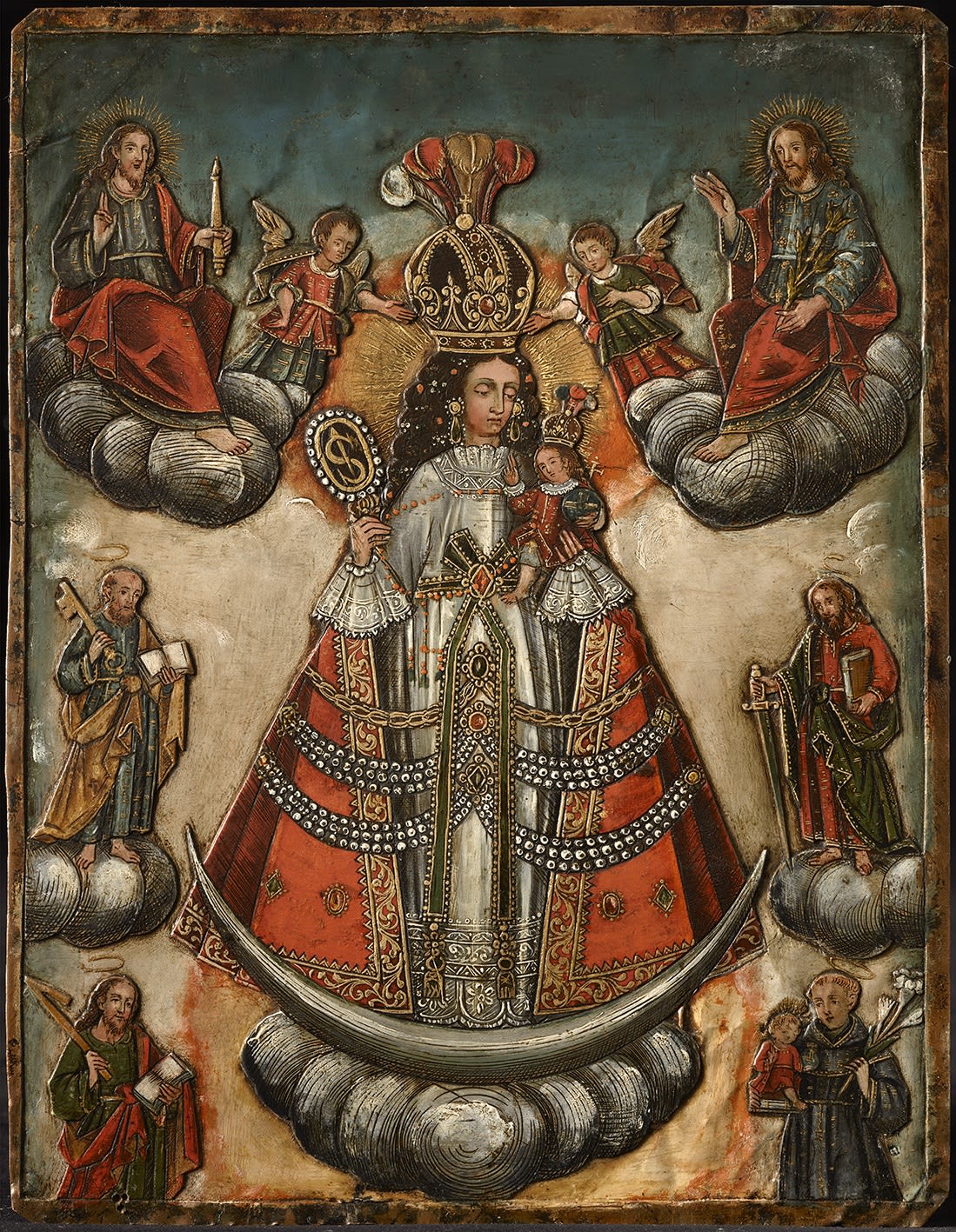Our Lady of the Rosary of Pomata
Lake Titicaca workshop, c. 1730
Oil and gold on copper
Provenance
Private collection
What we have here is a piece with a similar fattura, but which does not match the decorative pattern of the previous coppers. Our Lady of Pomata does not present a perimeter of peaks and arcs, but appears against a background of faded colors depicting celestial surroundings. Mary is holding Jesus in her arms, both wearing a mix of imperial crowns in the European style with Incan feather crests. This mestizo combination of symbols of majesty is a particular characteristic of this Marian title, originating in the town of Pomata, on the banks of Lake Titicaca. Equally, the rosary held by both mother and son provides an unequivocal identification of the subject. The rest of the pictorial field is taken up by eight other figures.
Towards the top, two angels place the Crown on the Virgin’s head while, on both sides, two sitting Christs complete the representation of the Holy Trinity alongside the Child being held by Mary. It was common during the process of converting the Americas for the complex concept of the Trinity to be expressed literally, either by a Christ with three faces or, in accordance with European practice, through three differentiated figures: Father, Son and Holy Spirit. In this case, the artist appears to have opted for a formula depicting three dentical Sons as incarnation of the three facets but having included a Virgin and Child in the lower part of the composition, he finally
decided that the Christ Child counted as one part of the Trinity. In the middle section we find St. Peter, with one of the keys that are his attribute, and St. Paul, who holds the sword with which he cut off St. Peters’ ear. Finally, in the bottom left-hand corner, St. Thomas the Apostle, with a builder’s square in his right hand and, in the bottom right-hand corner, St. Anthony of Padua and Child.
The iconography of Our Lady of Pomata became incredibly widespread in the first third of the 18th century, when Marian advocations took on particular importance. Furthermore, the origin of the devotion, in the Collao area, was one of the busiest locations in the Peru of the time. Its genesis and evolution from the title of Our Lady of the Rosary is linked to the Order of Preachers, or Dominicans, who evangelized the Lake Titicaca area between 1542 and 1572. Although Our Lady of Copacabana (a town near Pomata) was renowned for its miracles, the advocation we are examining here was, according to Querejazu, probably the one most often depicted in paintings.
